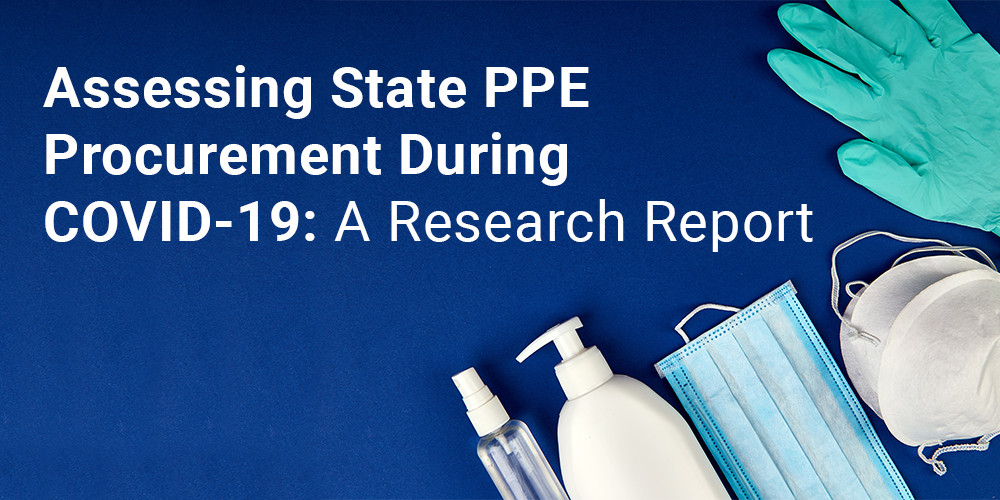State Procurement Answers The Call
During the COVID-19 pandemic, the National Association of State Procurement Officials (NASPO) embarked on a study to assess state procurement office structure and their processes’ impact on emergency response to the pandemic within their state.
Using over 100 hours of interviews with state procurement staff from 47 states and Washington, D.C., suppliers, and other state officials, the researchers identified specific themes of successful emergency operations and highlighted the need for state procurement to be involved early in emergency planning. Their findings are available in the full report, Assessing State PPE Procurement During COVID-19: A Research Report.
The final report suggests that increased centralized governance of state procurement led to a more effective response in tackling large-scale supply chain disruptions. Centralized procurement allowed for increased coordination, improved leveraging of the volume of the state’s purchasing power, and more efficient application of contracting expertise to a difficult market situation. A centralized approach also led to better coordination among disaster relief entities, PPE suppliers and hospitals, counties, and agencies requiring PPE to operate.
Defining four “governance archetypes” that characterize the general role and activities of state procurement offices, with archetypes defined by the degree of centralization of each state procurement office and its agility level to respond to the COVID-19 crisis, the researchers adapted a purchasing “Maturity Model” as a tool to identify the “ideal” practices of public procurement in disaster management. This Maturity Mode can be used by state procurement offices, or other government agencies, to review areas for improvement within their office and in their responses to state needs.
Among the practical steps procurement offices can take to implement successful disaster management principles, the interviews revealed incredible stories of the work done by procurement staff. Long working hours were crushing, lasting for months on end, as state emergency conditions continued to remain in place. Global supply chains required negotiating with Asian-based manufacturers and suppliers at all hours of the night and continued engagement during the day. All of this while procurement employees faced their own uncertainty and fear with the pandemic, especially in states that experienced big surges and fatalities early in the pandemic. The burn-out factor for many employees was extremely high; however, out of the pandemic rose a pride and renewed sense of professional identify and a growing sense of camaraderie experienced by the procurement staff, and this pride was mirrored by stakeholders.
Procurement often experiences criticism from the media or is consulted later in the process by stakeholders than might be effective. With procurement playing a central role in the states as they navigated the pandemic, stakeholders were quick to appreciate the expertise and skill sets of procurement staff and offices, navigating the complexity of sourcing PPE in a globally constrained supply chain. The status of state procurement was elevated, and state agencies recognized the critical role of procurement in an emergency response. As we emerge from the uncertainty and tragedy of the pandemic, it forces us to consider the future of state procurement as we prepare for the next set of emergency challenges. Many states and other organizations, including NASPO ValuePoint, have begun to incorporate risk management into new and existing contracts, and there is a growing recognition that state procurement needs to include supply chain management. The lessons learned from this study could help propel public procurement forward in the coming years while also ensuring that states are better prepared to meet future emergencies.
Brought to you by:





















